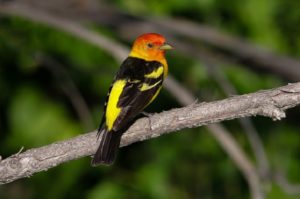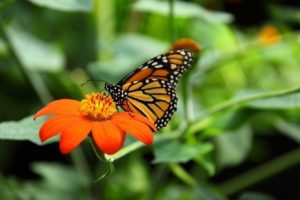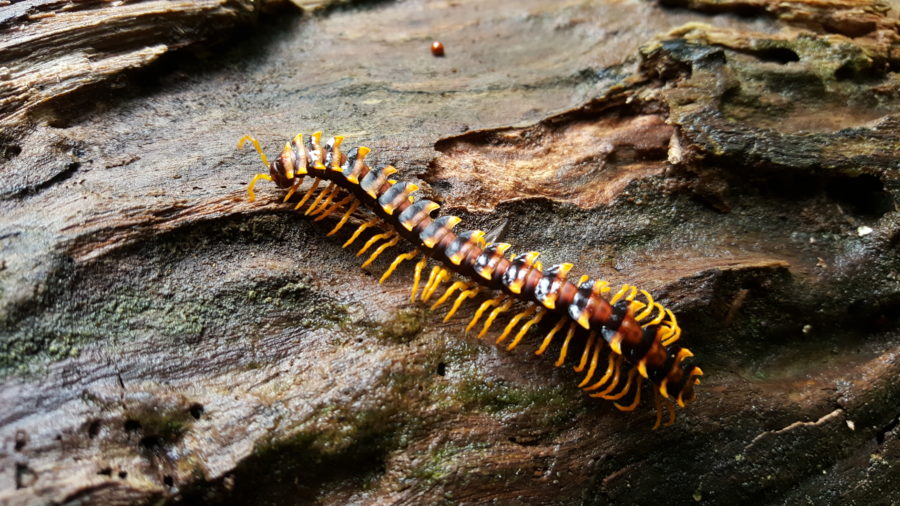Orange and Black Wildlife
Have you ever wondered why so many animals follow a Halloween-themed dress code of orange and black? From the American Redstart to the Monarch Butterfly, and thousands of species in between, this is indeed a common color combination.
The Function of Black Coloration in Wildlife
Black is a nearly universal color in the animal kingdom, including humans, and contributes to our hair and skin colors. It is a pigment made up of a chemical compound called melanin, which is synthesized from amino acids in the body.

Common Raven
Its function is to strengthen and protect the structures in the body that are subject to wear and tear, so it is especially common in bird’s bills, flight feathers and in the exoskeletons of insects. Black coloration on an animal can also serve to keep it warm in cold environments and to camouflage it against dark backgrounds for protection against predators.

Red-capped Manakin
Function of Orange Coloration in Wildlife
Orange is less common than black, or its neighbors yellow and red but can be found throughout the animal kingdom, from ladybugs to orangutans, like this one I saw in Borneo.

Orangutan
In birds, it is found in orioles, warblers, robins and many tropical species from toucans to this Andean Cock-of-the-Rock I was lucky to see in Peru.

Andean Cock-of-the-rock
Unlike black coloration, oranges and other bright colors tend to be more pronounced in the males (especially in the breeding season) in order to attract a mate, while the female of the species is drab; helping to camouflage her while sitting on the nest.

Western Tanager
Orange is also a common color found in toxic and venomous creatures such as this strawberry dart frog I found in the Costa Rican lowland rainforest. It serves as a warning to would-be predators that it’s best not to eat me!

Strawberry Dart Frog
Orange and its related colors come from carotenoid pigments, that are largely acquired from food sources, including leaves, insects, fruits, and seeds, though genetics certainly plays a role in the expression of those colors.

Gila Monster
The subject of coloration in animals is a fascinating one that we have only briefly touched upon here. Animals can gain their colors in myriad ways and use these colors and color combinations for a variety of purposes from advertising for mates to camouflaging from predators.

Ladybug Beetle. Photo by Jared Belson.
The spider below has both golden-orange markings on its body as well as a golden web. Its web is so strong, I once saw a large hummingbird in Honduras get captured in its lethal grip!

Golden-silk Orbweaver
Suggested Reading
If you’d like to learn more about the fascinating subject of coloration in animals here is an excellent source:
- National Geographic Bird Coloration by Geoffrey Hill

Monarch Butterfly


